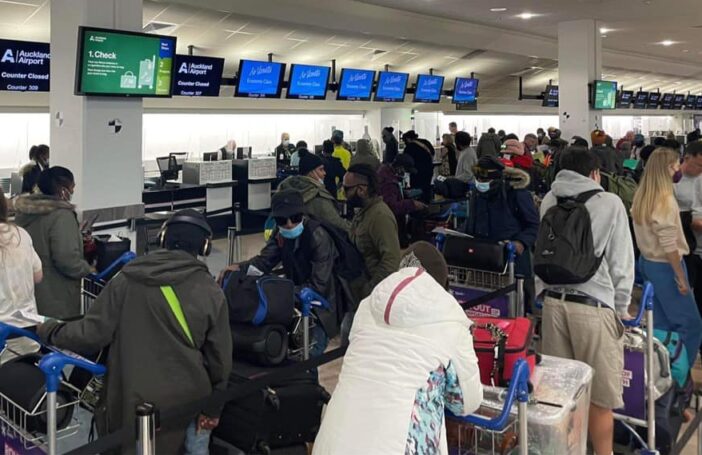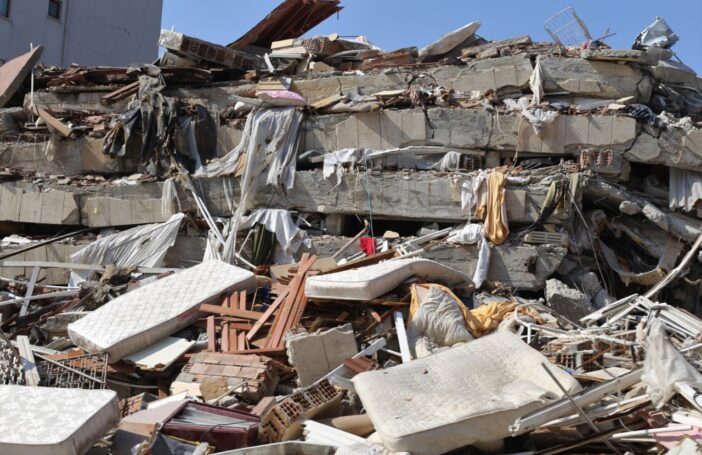Last October I argued that Vanuatu was facing an economic emergency. Since then, the world has become far more dangerous and uncertain, while Vanuatu was struck by the most damaging earthquake in its history.
The earthquake has had a brutal impact on all types of businesses across the country — initial findings from a business survey show that 60% of businesses surveyed anticipate their turnover will fall by at least 25% as a result of the earthquake for the first half of the year. For microbusinesses, 44% of those surveyed said they were struggling to afford basic essentials, with weekly income down an estimated 58%.
It is clear the economy needs a massive boost in the coming months. The Government needs to spend far more money far more quickly, but fundamentally the private sector also needs to be able to begin employing more people and spending. The reopening of the capital soon will help, after the excellent and urgent work which has been carried out on demolition.
As Vanuatu moves beyond the initial months, foreign currency equivalent to hundreds of millions of US dollars will be needed for reconstruction. So where will this come from?
Remittances, aid and other income (for example, citizenship sales) will all undoubtedly continue to be important sources of foreign currency, while insurance payments will provide a short-term boost. But these all are fragile and none of them represent money earned within Vanuatu’s economy.
So, what if Vanuatu wants to fund its own recovery? Here I explore Vanuatu’s two most important export sectors, agriculture and tourism.
In 2023, primary sector exports earned VUV5,418 million (US$44 million), far below what is needed.
75% of these earnings come from kava. But there is now a kava shortage, meaning kava exports are likely to stagnate for at least three years.
Exports of coconut products, cacao and beef have fallen 67% since 2014 and combined were just VUV1,024 million in 2023 (US$8 million). Cacao has strong potential, given the global market, but coconut and beef have limited opportunities.
I do not seek to diminish agriculture’s essential wider role in both the short and long-term, but there is no clear pathway toward agriculture earning large amounts of foreign exchange in the near future.
The story is completely different for tourism. Before COVID, travel dominated exports, bringing in nearly VUV30,000 million (US$244 million) annually – roughly 65% of total exports.

However, since COVID Vanuatu has had the Pacific’s worst tourism recovery. This means that total exports were 20% below the 2019 level in 2023 and will have fallen again in 2024.

But it should not be like this. Vanuatu has an astonishing location, climate and culture. The people are peaceful and welcoming. The natural environment is one of Vanuatu’s strongest assets — stunning, pristine and varied, with some genuine world class destinations such as Mount Yasur.
The islands of Vanuatu are simultaneously a unique selling point and one of the world’s best chances to develop sustainable tourism.
Yet this potential has barely been explored.
Fiji gets four times more tourists per 1,000 residents. Vanuatu’s products are underdeveloped, underserviced and often unknown. Tourism should be doing so much more for Vanuatu’s economy and society.

As a simple example, in February I spent a weekend on Epi, an island just 100 kilometres north of Efate. Our stay in the village was (as usual) filled with joy, nature and love. It was restorative for heart and soul, and we spent good money in ten businesses. We did a hike to a massive waterfall, harvested kava and ate oranges straight from the tree. With a few improvements, this trip could be a perfect short expedition and a fantastic community earner.
It is just 40 minutes from Port Vila to Epi. Tourists could be sipping coconuts in Lamen Bay five hours after leaving Brisbane, ready to hike the next day. Yet we were the waterfall’s first tourists since 2019.
 It is only once attractions such as these have healthy numbers of visitors that tourism will have begun to realise its potential. However, rural tourism is limited and often of poor quality, and realistically it will take years of improvement before a network of small rural operators can be a major source of income. In the immediate term, the businesses that must be the main earner of foreign currency are the large tourism operators in the main hubs of Efate, Santo and Tanna.
It is only once attractions such as these have healthy numbers of visitors that tourism will have begun to realise its potential. However, rural tourism is limited and often of poor quality, and realistically it will take years of improvement before a network of small rural operators can be a major source of income. In the immediate term, the businesses that must be the main earner of foreign currency are the large tourism operators in the main hubs of Efate, Santo and Tanna.
There is also undoubtedly the spare capacity in terms of international flights and rooms to double today’s numbers, another reason that tourism represents the best opportunity for rapid growth. But there is simply no way for tourism to reach its potential unless domestic connectivity problems are fixed. Air Vanuatu’s mismanagement and liquidation has cost untold millions, and a solution has been desperately needed for years.
The recent government budget has funding for two new twin otter planes for Air Vanuatu, but this will still leave capacity below 2019 levels when there were two ATR twin-engined turboprops. It will take a long time for Air Vanuatu (now owned by AV3, a new entity formed after liquidation and solely owned by Government) to be able to provide the necessary service level — if indeed it ever can. The Government needs to be open to all innovative solutions in the short and long-term.
Beyond this, a weird narrative has somehow emerged in recent years that tourism is not important. Words matter, and it is critical for the Vanuatu government to continuously celebrate and support both the private sector and the tourism industry. This is low-hanging fruit for the new government, and something on which they have pleasingly made a good start.
A basic next step could be to rename the Ministry of Trade and Commerce the Ministry of Tourism and Trade. This is a costless way of signalling to entrepreneurs and investors that the government understands the country’s economic drivers.
The government and industry also need to send a loud and clear message: Vanuatu is open and ready to receive tourists. The additional VUV100 million already announced by the new government for the Vanuatu Tourism Office is welcome, and it is vital this campaign is a success.
Finally, the Government should be bold — explicitly aim to become a tourism powerhouse by setting optimistic goals for tourism arrivals. This could aim for a return to 2019 levels in 2026 followed by a doubling of arrivals by 2030. Of course, this will be difficult to achieve but it is both possible and what Vanuatu needs.





Very well written article Peter, you are 100% correct. Myself and my wife (expat Kiwis) live in Vanuatu and have done so for the last 2 years, prior to which we alternated every 2 months between NZ and Vanuatu. We live on Moso Island and have a business on Efate. It’s one thing to say “get Tourists back here” but there are many more complex issuse that you may not have seen on your recent trip. There are various problems, but I will choose just 3 to touch on for now. 1, Government. A big problem here is the unstable government situation we have had over the last 5 to 6 years. This has led to a lot of inconsistency for business on various levels. It’s very hard to do business here when the rules are always changing with a new government. 2, Transportation and Roading, while the standard of transportation has been raised, the roads haven’t been maintained, what used to be a 30-35 minute drive from Port Vila to our business in Havannah will now take you an hour in a taxi or a box bus. You used to be able to drive around Efate going to 4 or 5 different attractions in one day with the tour operators, now it’s only 3 (no difference in cost though). 3, Staff So many business owners i talk to say staffing is there biggest weakness. They take staff on train them to a reasonable level where they are getting a good return on their investment only to have them poached away by Kiwis and Aussies to pick fruit and vegetables as seasonal workers promising them mega bucks when its only minimum wage. The issue here is that the country they go to and the business they work for benefit financially and economically far more than the seasonal worker or Vanuatu. Please don’t get me wrong, we love living here and the people, the culture and the island lifestyle is simply amazing. I would be more than happy to discuss this further and in more indepth detail if you are intending to do follow up articles.
Hi Greg,
Yes of course these issues are far more complex than simply raised in the article, and I think the ones you have touched on are probably the three most important things I didn’t discuss, so thank you. The new Government looks hopefully like we’ll have stability at last, and yes the road is nearly unusable at the moment, but works should start soon to fix it. Let’s just hope it lasts longer than two years…
And as for staffing yes, it is a huge need, and one that requires (in my opinion) far easier access to labour (skilled and unskilled) from overseas in the short-term, and then a complete rethinking and transformation of the education and skills pathways in the medium to long-term. But what that looks like and how to achieve that is obviously far beyond this platform
I’ll be in touch with you separately for a further catchup to discuss some of these issues.
Thanks
Travelling between islands is still problematic.
Our family have just taken over the biggest cacao project in Malekula which was formerly managed but now abandoned by the government.
My wife has been stuck in Port Vila for week after 3 cancelled flights to Malekula. She is presently on a boat now to Malekula.
When we asked the Department of Trade for help in finding export markets for our cocoa, they said we have to find our own.
It’s depressing.
As a couple who visited Vanuatu frequently, we don’t see much happening to entice people back . I know it’s very difficult for them as a lot has been destroyed. Resorts that are operating aren’t really tempting people to return. Santo we would consider as an alternative to Vila at the moment especially Aore which is beautiful. Having said that, we’ll return at sometime for sure. We love Vanuatu and it’s people.